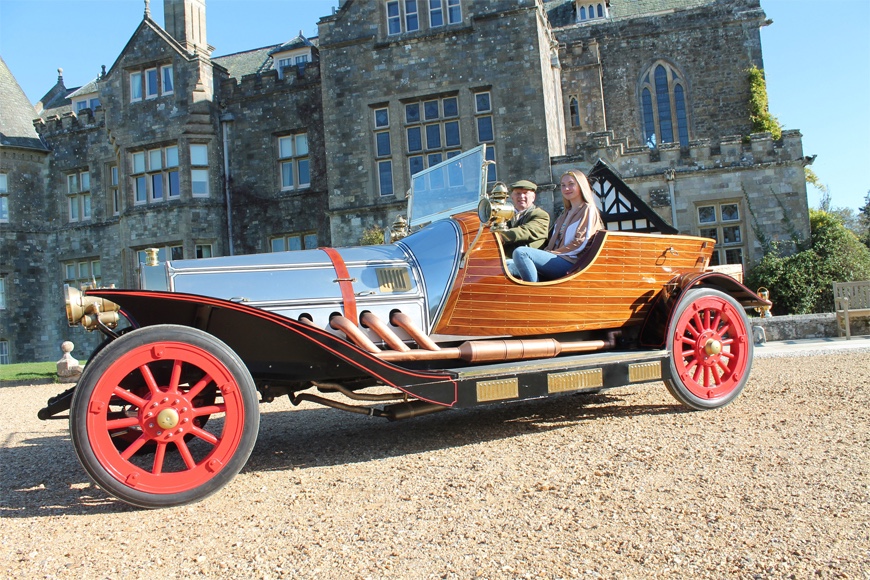Copies of the first two volumes of Chitty-Chitty-Bang-Bang, The Magical Car by Ian Fleming, illustrated by the Kate Greenaway Medal award-winning illustrator John Burningham, come to auction as part of an Antiquarian & Collectable Books from Thomson Roddick Callan in Carlisle this Thursday.
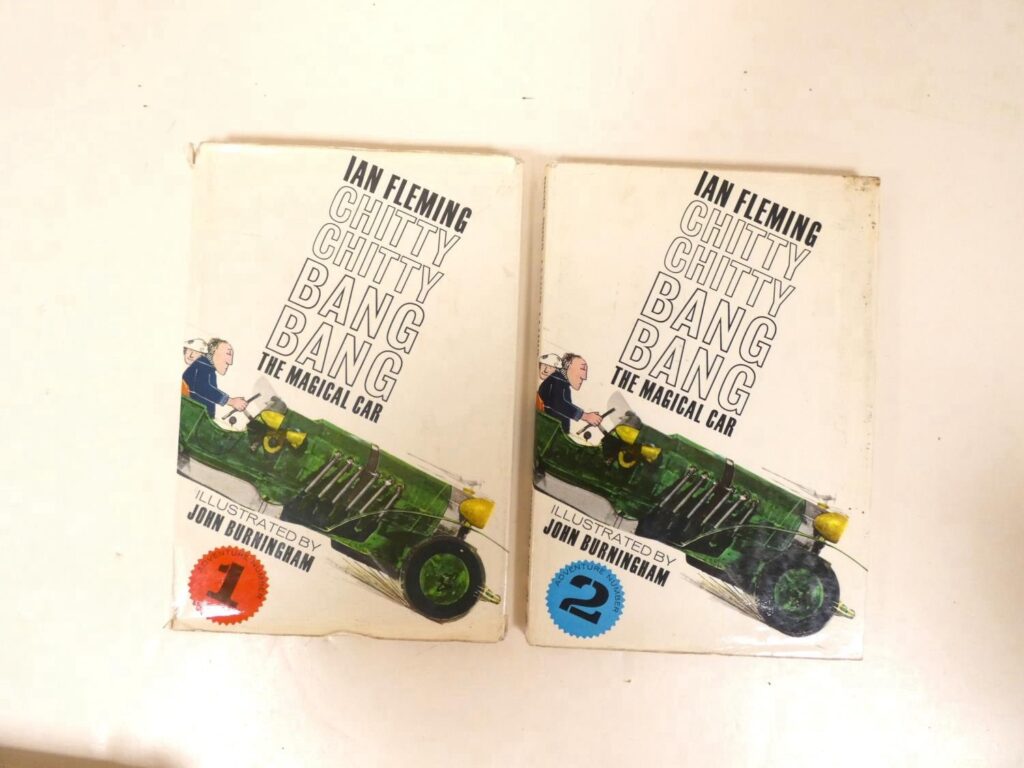
A full set of the books could cost you over £1250 from antiquarian bookshops, but for those on a budget, Candlewick Press published a facsimile edition in 2014. The auction, spanning 217 lots, also features lots including some of the quirky cat books created by Louis Wain.
Art by the book’s original illustrator John Burningham is currently on display as part of the Chitty Chitty Bang Bang Adventure at Mottisfont, near Romsey, Hampshire until 2nd November 2025, alongside a custom built Chitty Chitty Bang Bang front end of the car, inspired by the original illustrations.
This edition of Ian Fleming’s now world famous children’s story was published by Jonathan Cape in 1964, created by the James Bond author in 1961, while convalescing from a heart attack, as a bedtime story for his son, Caspar. The book was inspired by a celebrated English racing car nicknamed ‘Chitty-Bang-Bang’, which was built and raced by Count Louis Zborowski in the 1920s.
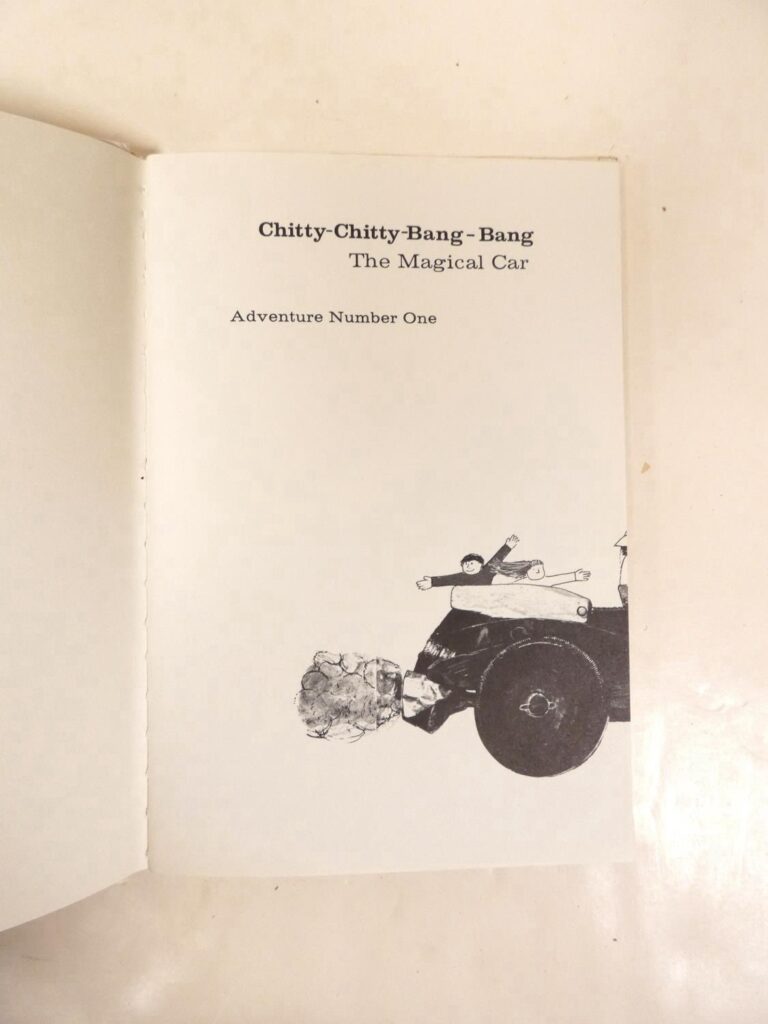
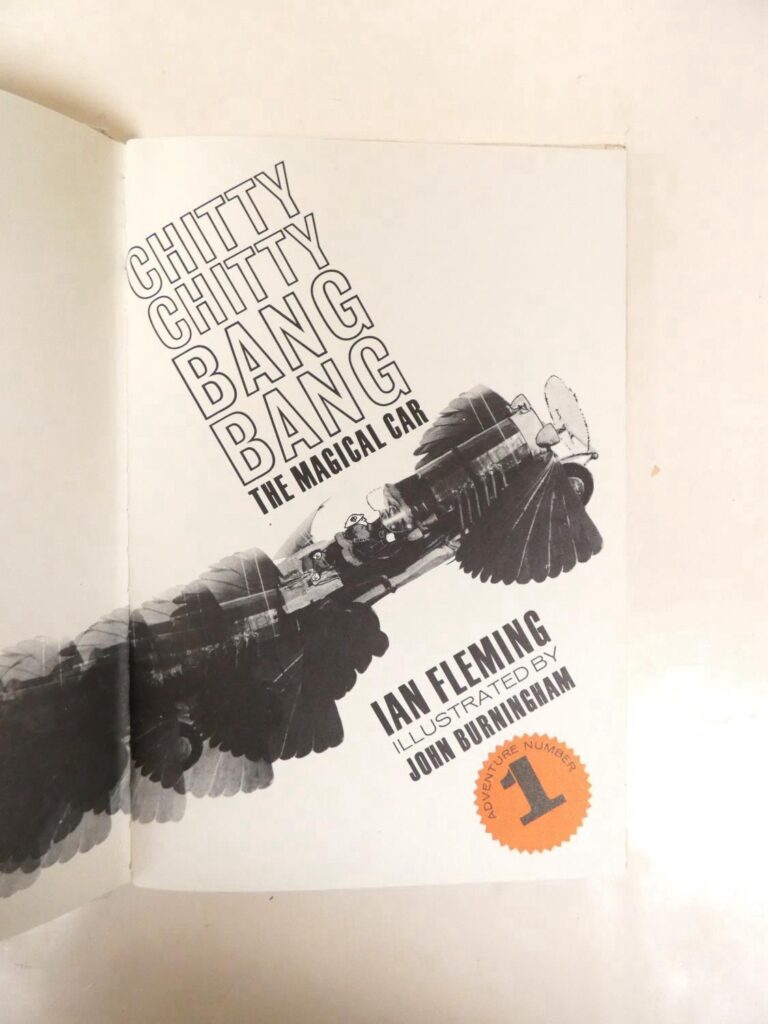
John Burningham was not Fleming’s first choice to illustrate the story. Cape’s most successful author at the time, he had suggested cartoonist “Trog” (Wally Fawkes), who completed preliminary drawings for the project, but The Daily Mail refused to allow him to complete the work, as many of Fleming’s works were serialised in its rival, the Daily Express.
Fleming consulted his motor engineer friend, automotive and aeronautical designer Charles Amherst Villiers, who produced a sketch based on Fleming’s description of the magical car, of “a low green rakish car, which looked like an SSK Mercedes with a round Delauney Belleville radiator”, according to Fleming’s biographer, Andrew Lycett.
Villiers could not commit to providing illustrations for the book, as he was busy developing Grand Prix cars for Graham Hill, so illustrator Haro Hodson, a war artist and cartoonist working with The Observer when Chitty landed on his desk, was approached by Cape. He produced some trial sketches, but Fleming rejected them as not being suitable.
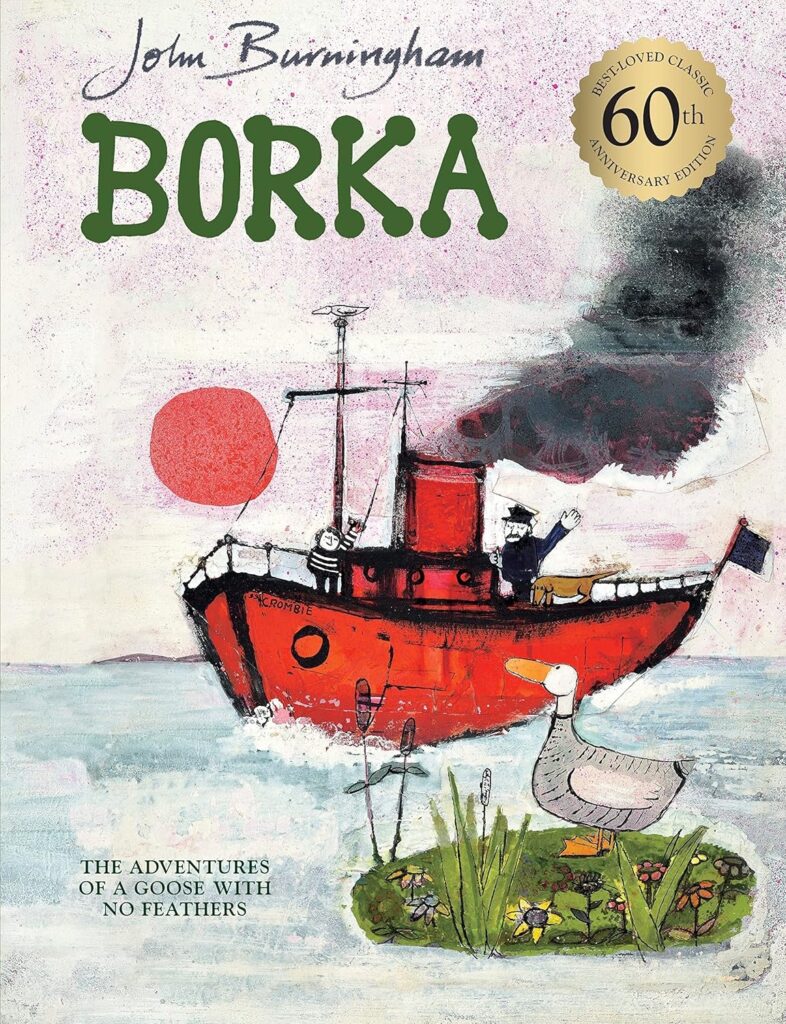
Villiers drawing was then passed to Cape’s popular new illustrator, John Burningham, who had debuted both as book author and book illustrator in 1963 with the picture book, Borka: The Adventures of a Goose With No Feathers, for which he won the 1963 Kate Greenaway Medal from the Library Association.
Burningham, who had entered commercial illustration on posters for London and British Transport and animated films, was asked to illustrate the whole series on the strength of his debut story. He followed Villiers and Fleming’s instructions carefully and, although Villiers’s drawings were not used, Burningham’s illustrations of the car “bear a striking resemblance to Amherst’s coloured drawings”, according to Paul Kenny, Villiers’s biographer.
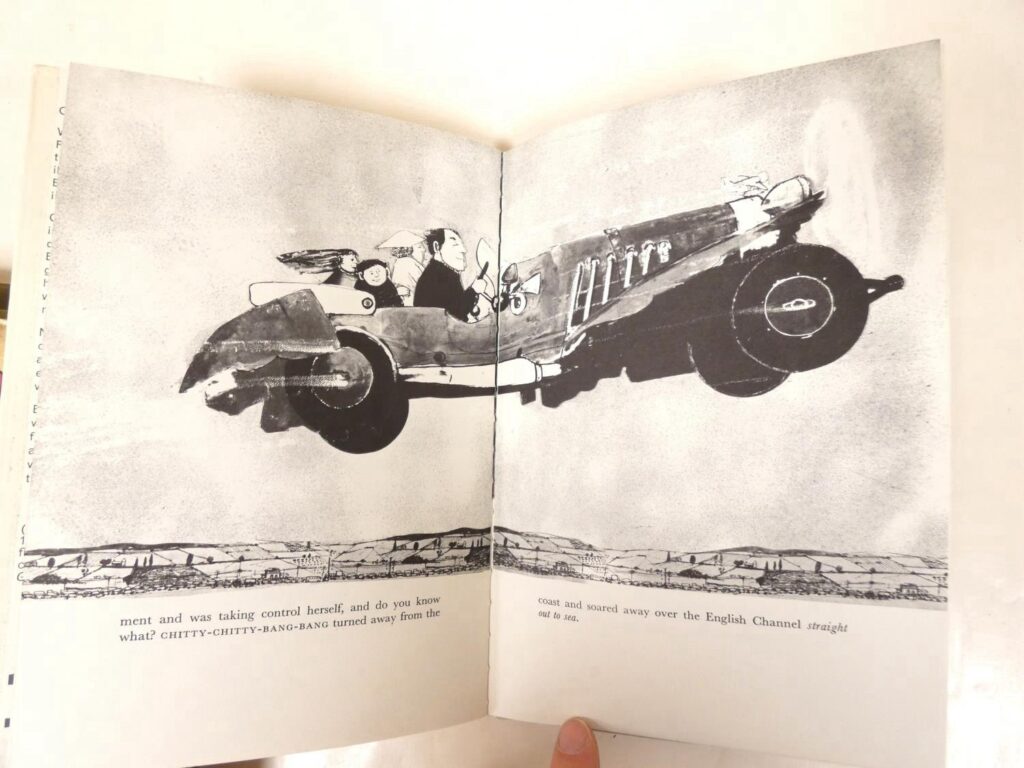
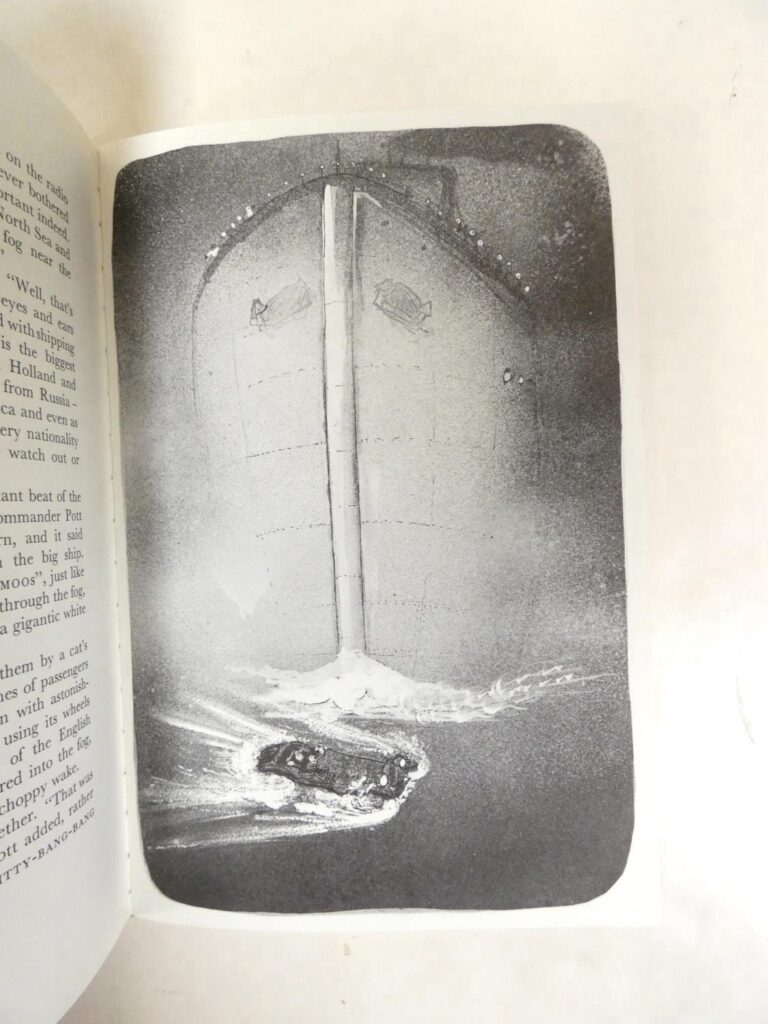
Chitty-Chitty-Bang-Bang was originally published in three volumes, between October 1964 to January 1965, their publication staggered to maximise sales over Christmas; an omnibus edition followed in 1968.
Sadly, Fleming himself did not live to see the story published; he died of another heart attack on 11th August 1964, the first book published two months later.
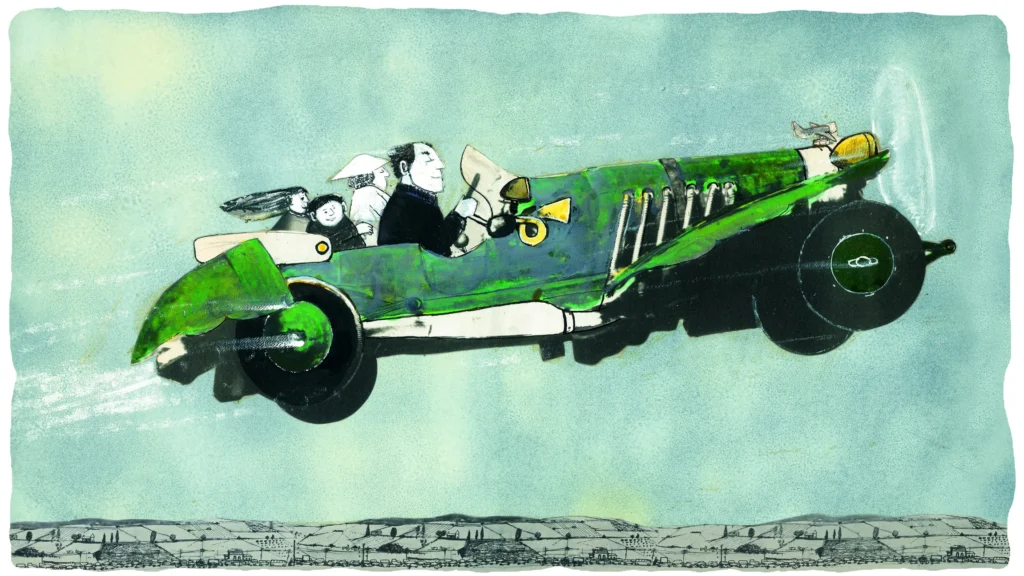
Burningham’s witty and timeless art-work, along with Fleming’s imaginative text, led to Chitty becoming “the most famous and best loved car in English-language fiction” according to Selina Skipwith, Keeper of Art at The Fleming Collection, in a review of John Burningham: An Illustrated Journey, published in 2011 by The Fleming-Wyfold Art Foundation, in an edition of the Scottish Arts News Magazine the same year.
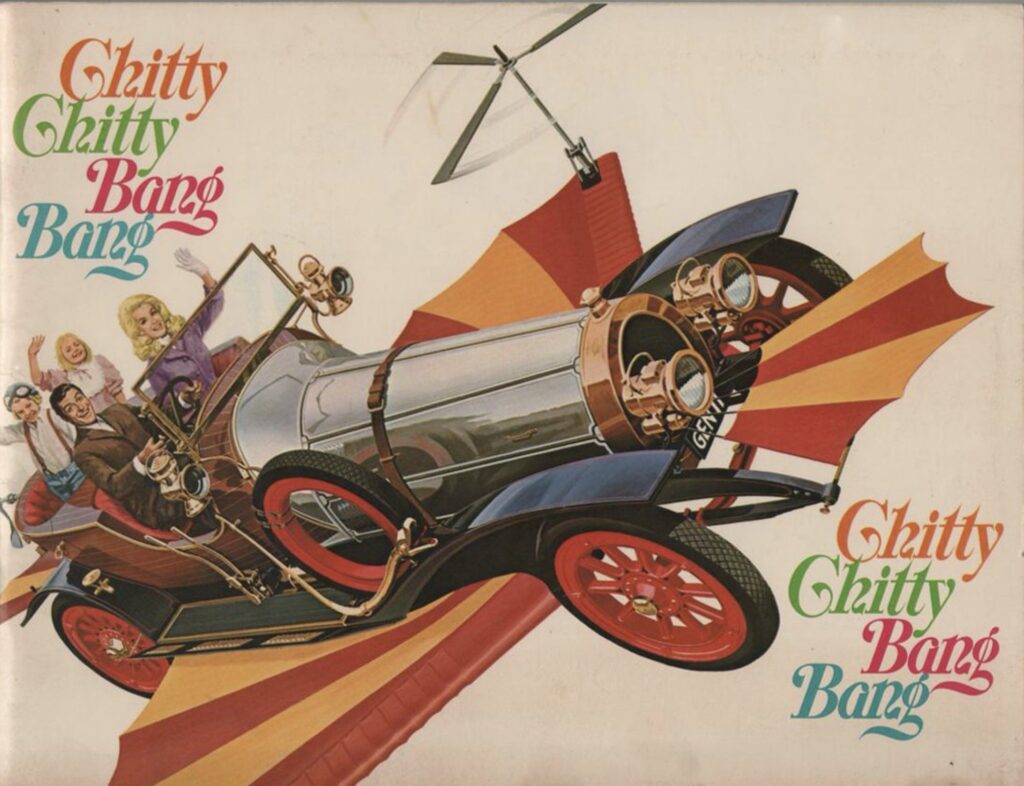
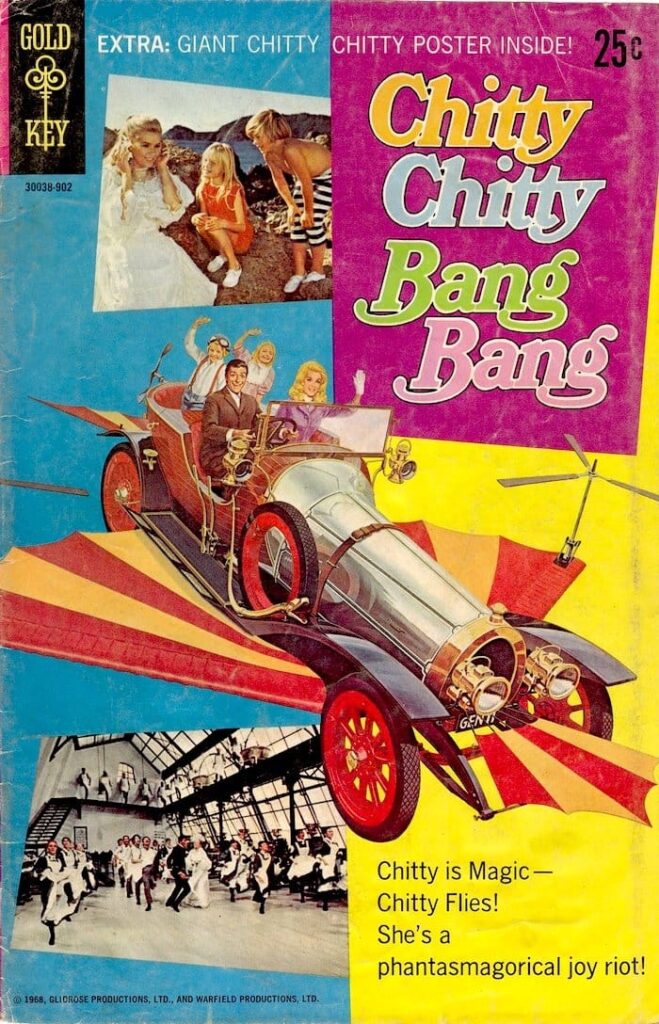
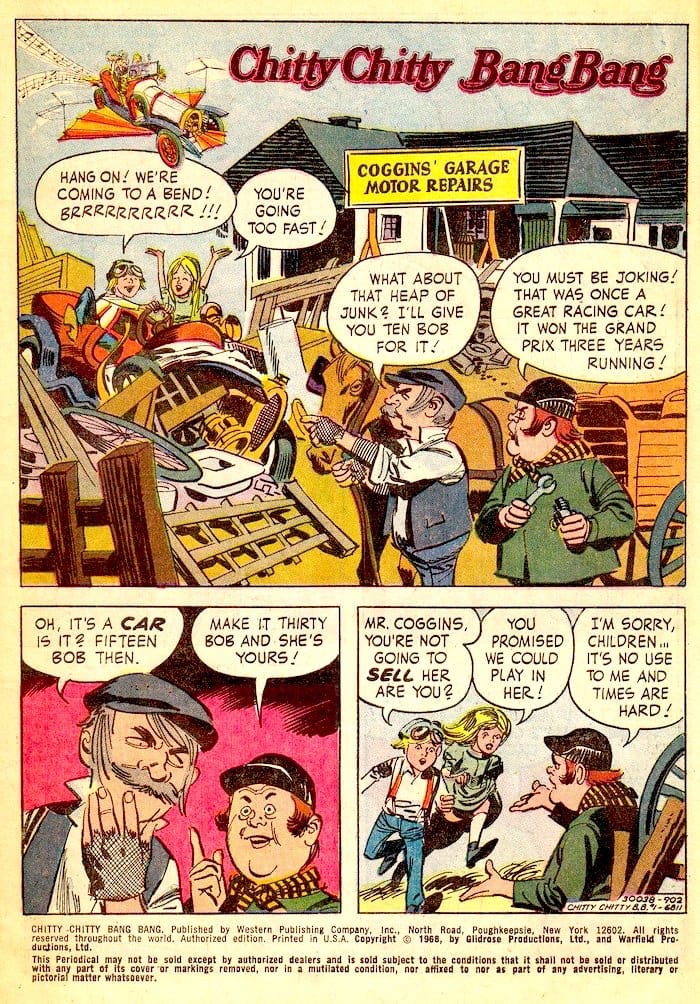
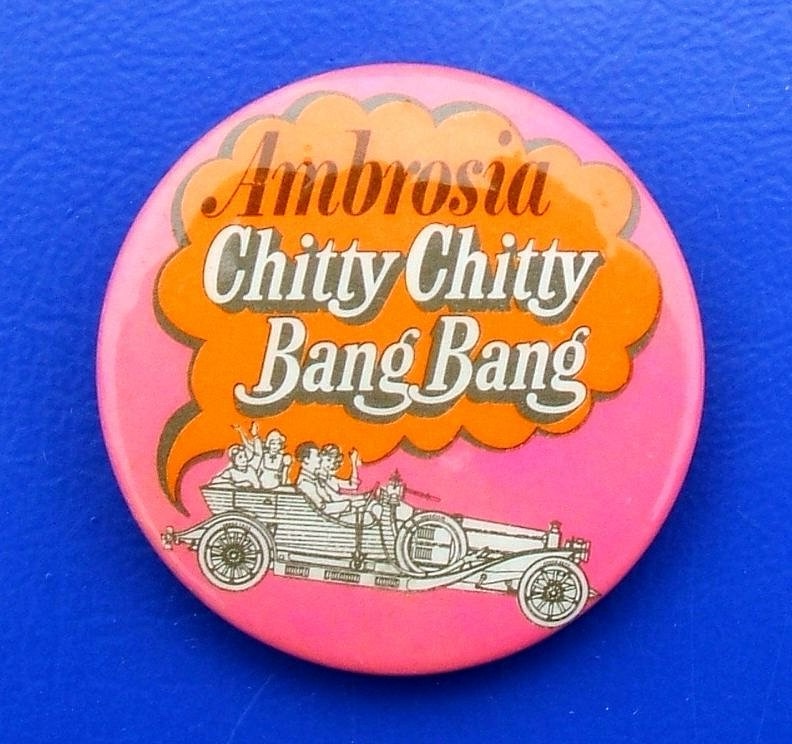
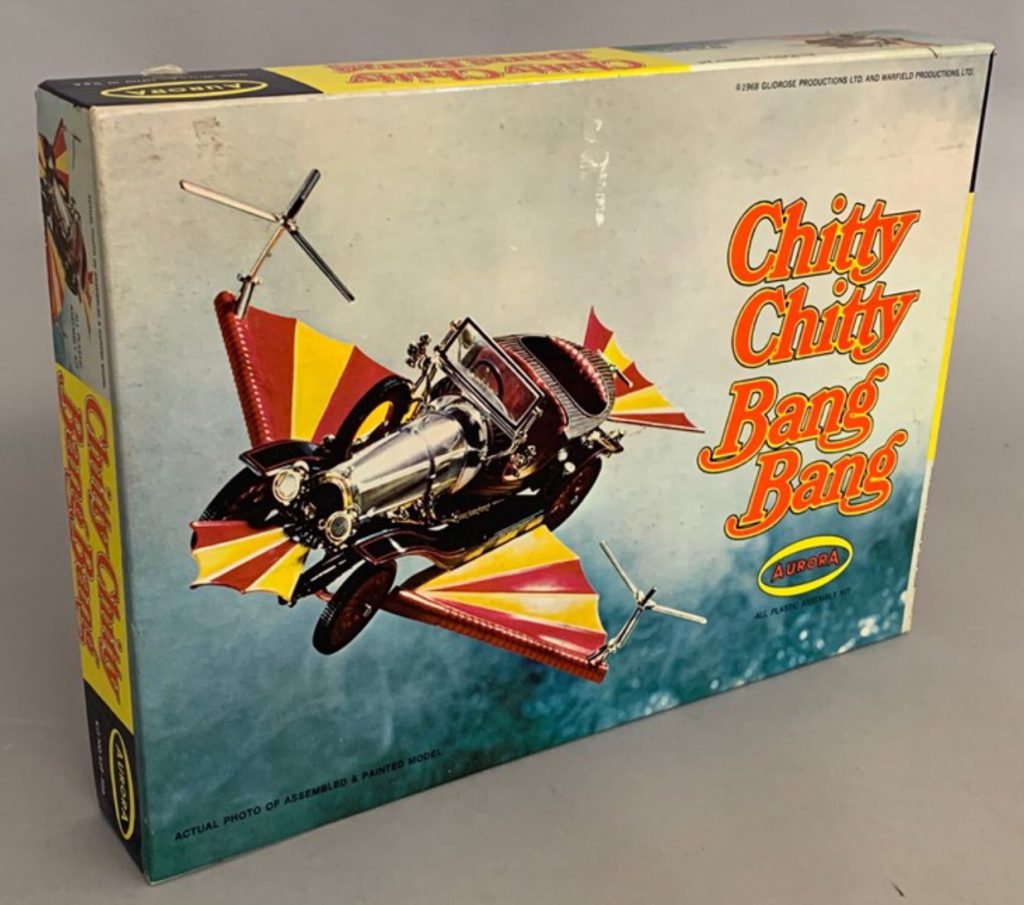
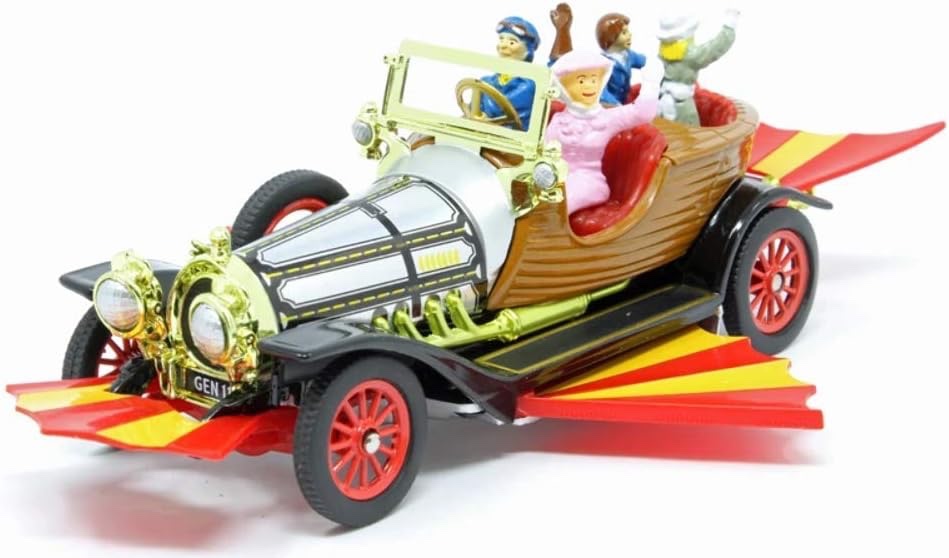
The story was serialised in the Daily Express and loosely adapted as a 1968 film of the same name starring Dick Van Dyke and Sally Ann Howes, with a screenplay by Roald Dahl and Ken Hughes, produced by Albert R. Broccoli, the co-producer of the James Bond film series; a subsequent novelisation was also published, and adapted as a comic strip by US publisher Gold Key, written by Gary Poole and drawn by Fred Fredericks.
The Film Cars
Six original Chittys were built for the film by Alan Mann of Alan Mann racing, two for driving and close-ups. One is on display at the National Motor Museum, Beaulieu, which was used for the hovercraft and some ‘blue screen’ special effect flying sequences. It is mainly made of lighter weight aluminium to make it easier to manoeuvre during filming.
The fully-functional road-going car with registration GEN 11 (UK) / GEN 1i (NZ) is owned by director Peter Jackson, who was seen near the WETA Workshop in New Zealand driving cast members of The Hobbit films around in the car, while playing the main theme song through a sound system. It has made appearances occasional charity events in New Zealand.
The others include one on display at the Stahls Automotive Foundation in Michigan (the version built with a second, hidden steering wheel and controls, which allowed the car to be driven without a visible driver to give the illusion that Chitty was driving herself); and the flying model, typically shown on film advertisements and posters, owned by American entrepreneur, Ralph Tyler Spencer, who bought it for $505,000 in 2007, then spent about $575,000 to restore it to better than new.
The original racing variant with the British racing green livery and prominent Number 3 shown winning and crashing during the opening credits montage was converted some time after 2010 into a Chitty replica by Gordon Grant, and has been exhibited in museums across the UK.
Chitty-Chitty-Bang-Bang reinvented
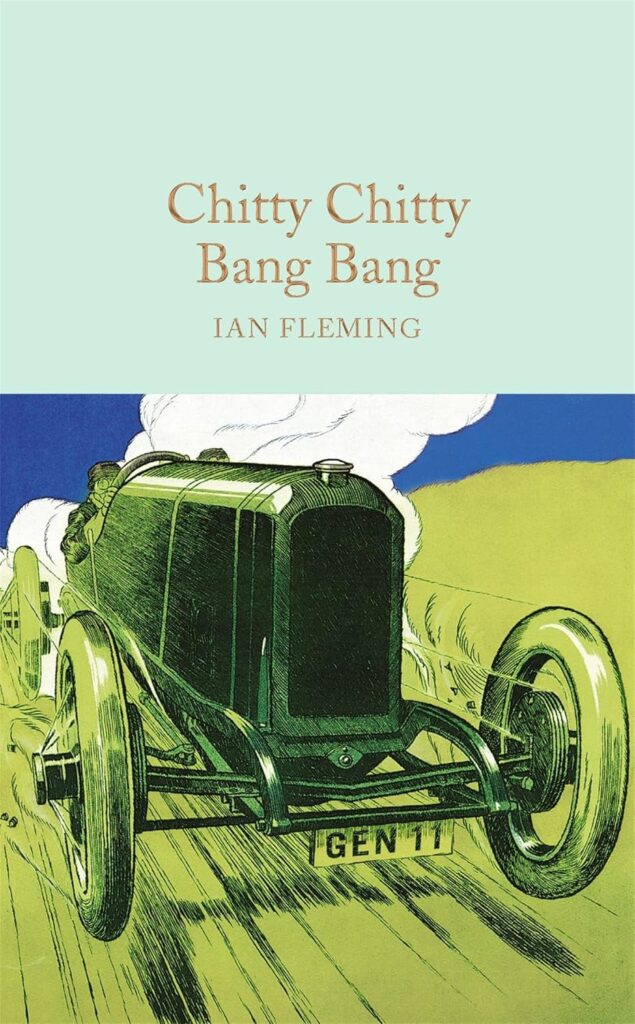
The original novel has been published with designs by different artists over the years, but Chitty was reinvented on the page in 2011 in an official book sequel by Frank Cottrell Boyce, Chitty Chitty Bang Bang Flies Again. The all-new illustrations for what became a trilogy of books are by Joe Berger, whose line is dynamic, full of adventure but with wonderfully detailed technology that Amherst Villiers would no doubt pore over.
Berger also illustrated a new edition published as a Macmillan Collector’s Library title of the original Fleming classic in 2016, offering 21st century colour and action to new readers.
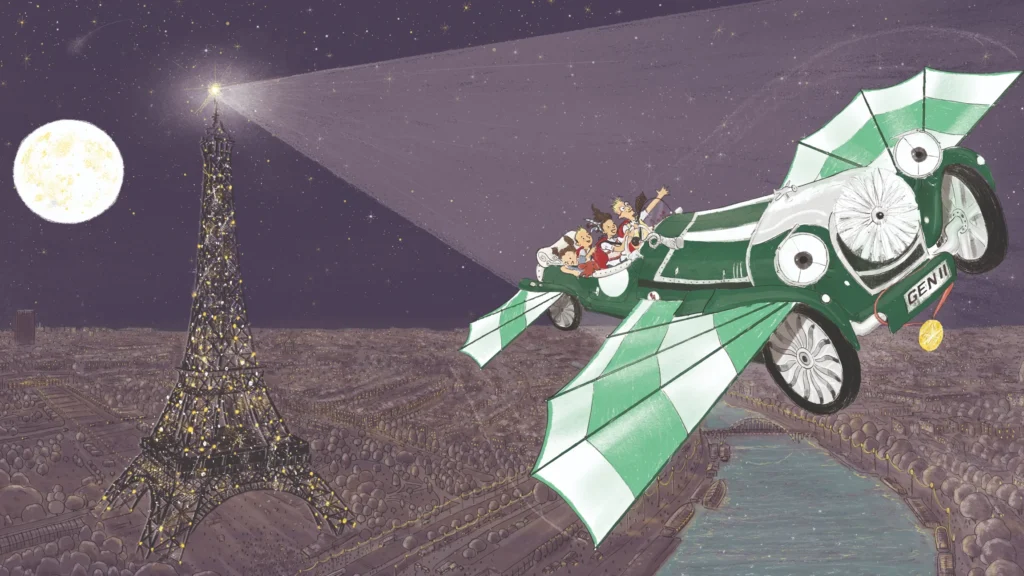
A beautiful hardback picture-book format, adapted by Peter Bently and illustrated by Steve Antony was published in 2020, aimed at three to five year-olds.
Incredibly, Steve was approached to create his new illustrations an just a week after buying a copy of the original 1964 volume of Chitty Chitty Bang Bang in a London bookshop.
“John Burningham has long been one of my favourite illustrators, and Chitty Chitty Bang Bang one of my all-time favourite tales. Burningham’s illustrations are so full of energy, grit, and character. The perfect match for Chitty’s wild spirit,” he says in an article about the project on the official John Burningham website.
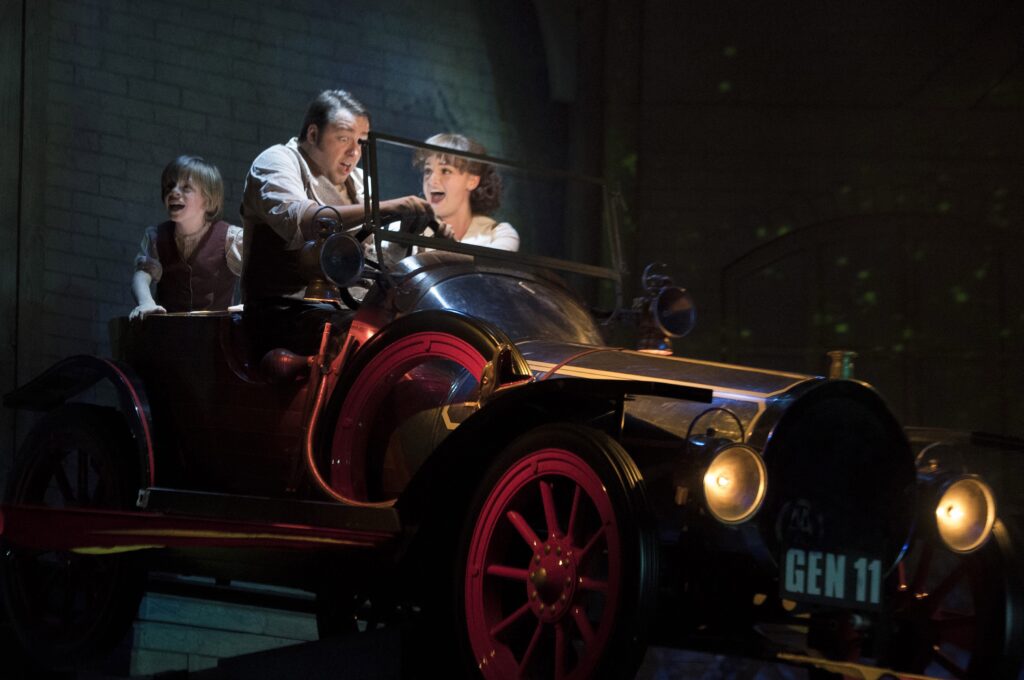
Last year, celebrating the 60th anniversary of the story’s debut, Ian Fleming Publications published a new edition, illustrated by Thomas Gilbert.
Chitty-Chitty-Bang-Bang has also been adapted as a stage musical, based on the film, and into an audio drama for BBC Radio 4 Extra in 2011, Imogen Stubbs providing the voice of Chitty. And, of course, Corgi’s ongoing re-release of some of its classic vehicles includes a model of the car.
• Thomson Roddick Callan Antiquarian & Collectable Books opens at 11.30am Thursday 25th October 2025, The Auction Centre, Marconi Road, Carlisle, Cumbria CA2 7NA | Full Catalogue Online Here | You must be registered to bid
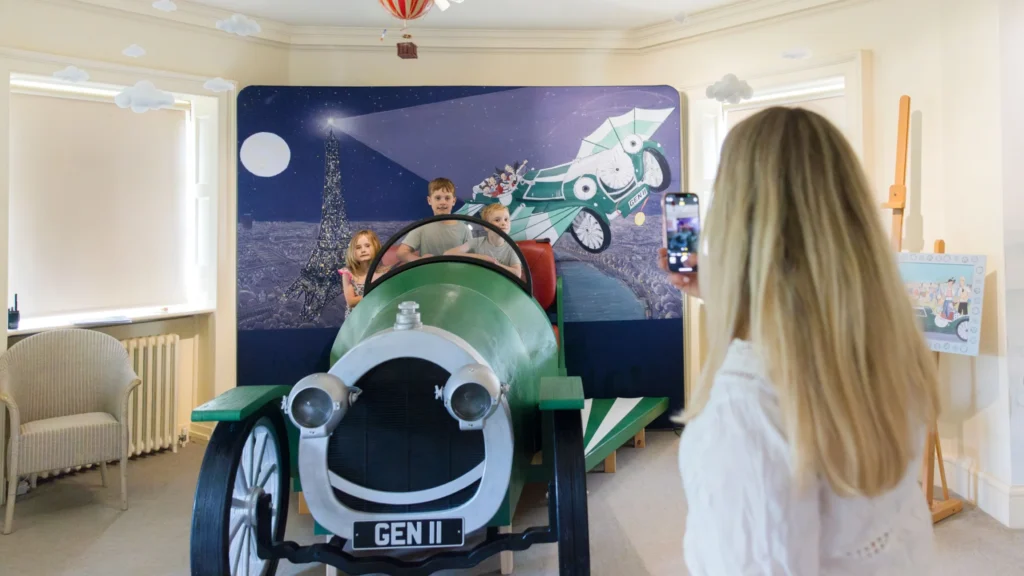
• The Chitty Chitty Bang Bang Adventure at Mottisfont, near Romsey, Hampshire until 2nd November 2025
The Chitty Chitty Bang Bang exhibition is designed with families in mind, offering a fun and welcoming space for all ages to enjoy together. Large-scale illustrations and artwork displayed at children’s eye level invite younger visitors to connect with the story visually. Cosy reading areas with books allow families to dive deeper into the tale, and engage with the artwork and story.
Fly downthetubes for…
• John Burningham – Official Site
• Ian Fleming Publications: Chitty Chitty Bang Bang
• How Chitty came to be by Jon Gilbert
Jon Gilbert, author of Ian Fleming: The Bibliography and internationally renowned dealer in rare Fleming-related material, explores the provenance of Fleming’s enchanting children’s story, Chitty Chitty Bang Bang
• Wikipedia: Chitty-Chitty-Bang-Bang
• National Motor Museum Chitty, Beaulieu
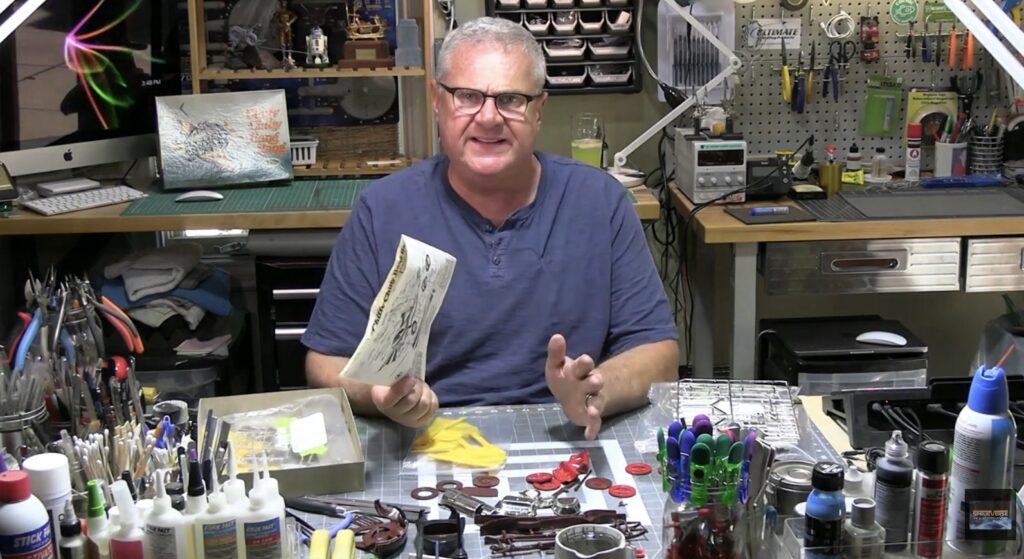
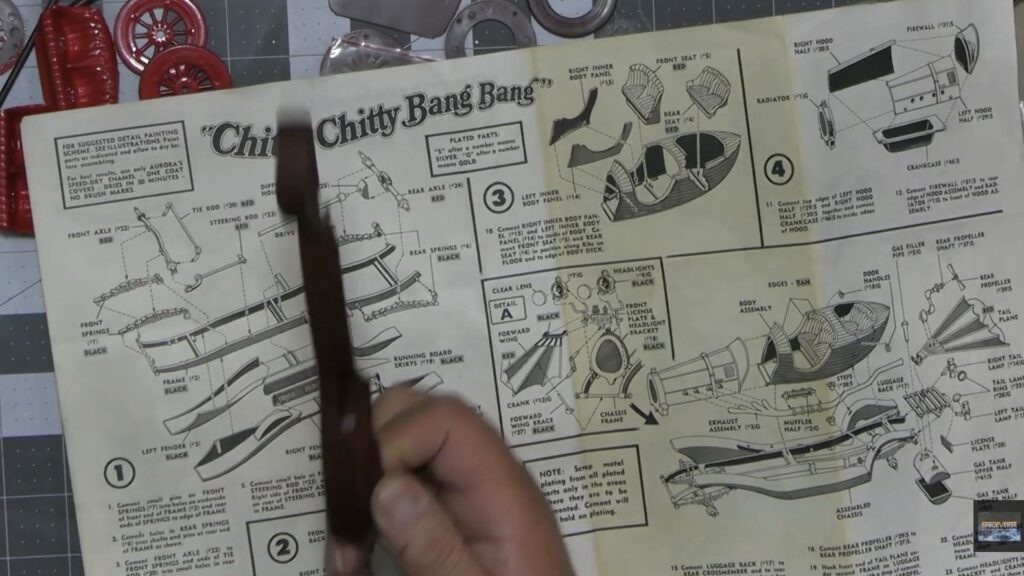
• Build Aurora Models Chitty Chitty Bang Bang car – Part One
From the 1968 film, Chitty Chitty Bang Bang comes this Aurora kit – and Philip Segal managed to find a couple of half-built, gluetastophies on eBay – and tries to restore, repair and build it
• Build Aurora Models Chitty Chitty Bang Bang car – Part Two
The Books
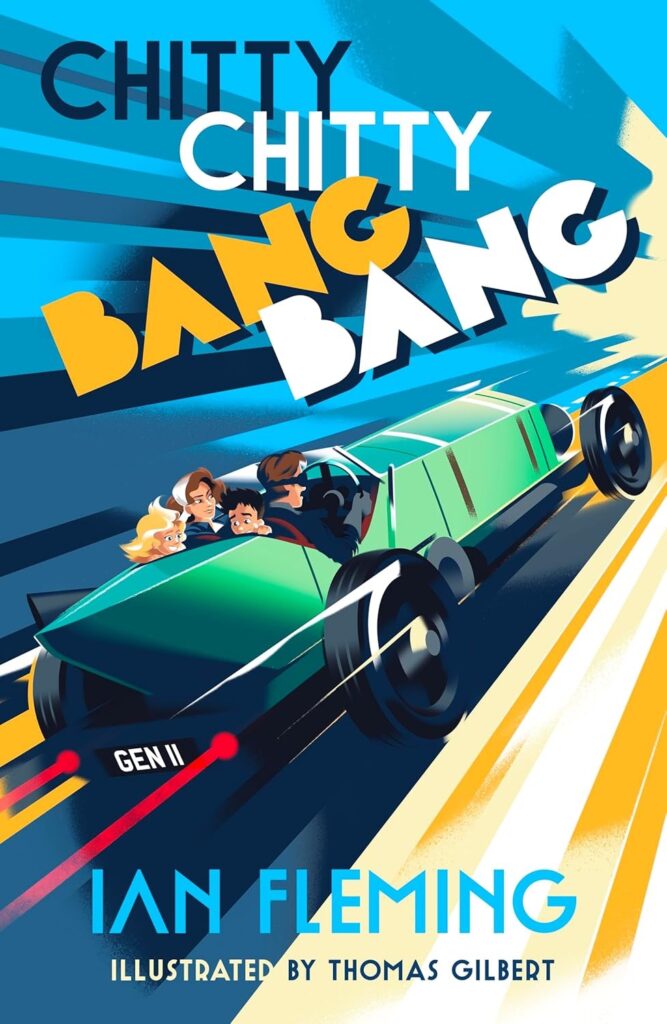
Meet the Pott family: Caractacus, Mimsie, Jemima and Jeremy – the family of crackpots who just invented an incredible whistling sweet. Their next project? Fixing up their new car – a very, very special car…
Buckle up for a journey over the sea and through the sky, into the clutches of a gang of villainous gangsters. Join the Potts for the adventure of a lifetime!
• Chitty Chitty Bang Bang: The Magical Car – 2014 Facsimile Edition (AmazonUK Affiliate Link)
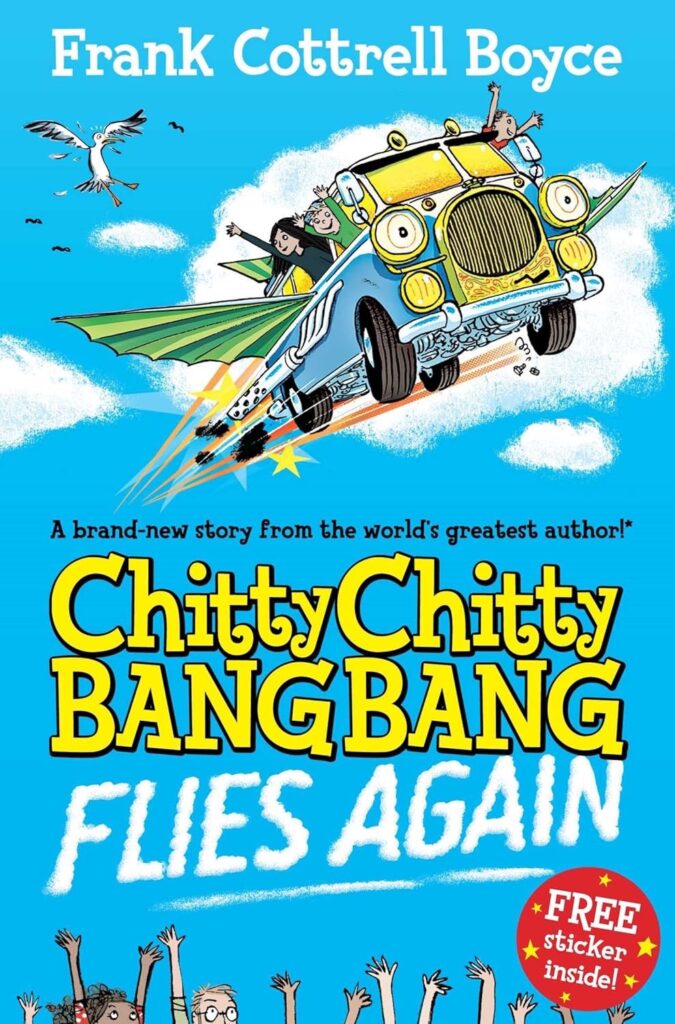
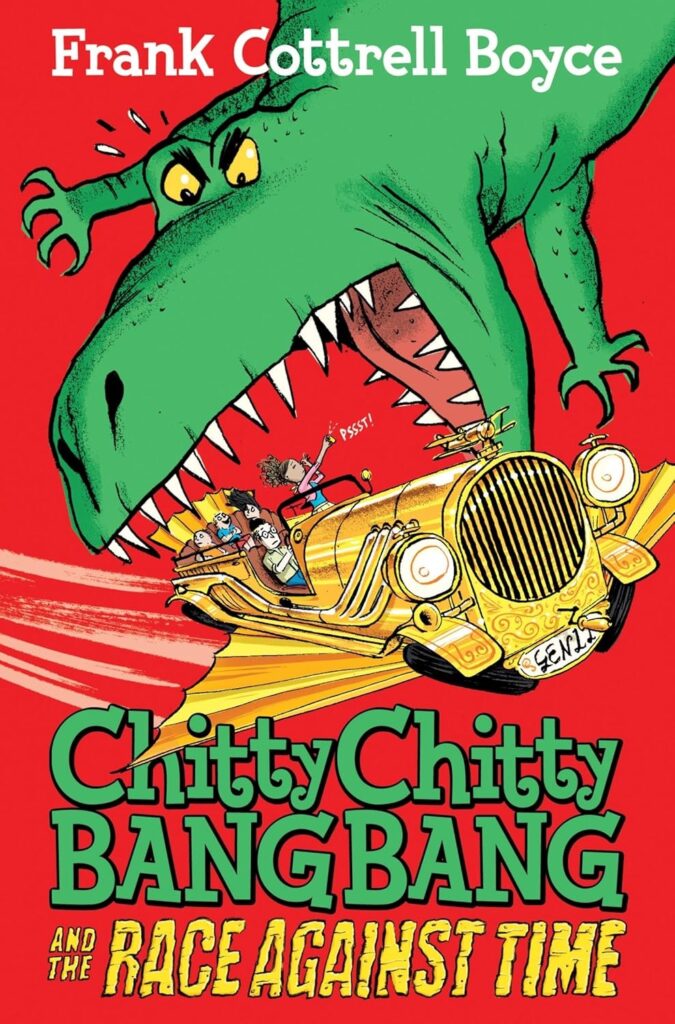
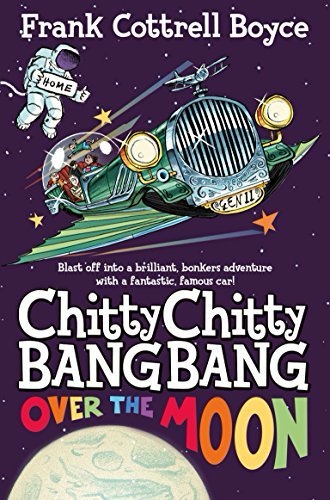
When the Tooting family find a vast abandoned engine and fit it to their camper van, they have no idea of the adventure that lies ahead. The engine used to belong to an extraordinary flying car – and it wants to be back on the road again . . . fast! The Tootings can haul on the steering wheel and pull the handbrake as hard as they like, but their camper van now has a mind of her own. It’s not long before they’re hurtling along on a turbocharged chase as Chitty tracks down her long-lost bodywork. But there are sinister forces at work too. When it comes to a car as special as Chitty, everybody wants a piece of her . . .
Uh-oh! Chitty Chitty Bang Bang is stuck in reverse. And Little Harry’s pressed a button that means Chitty is reversing through time – with the Tootings aboard. When they finally come to a stop, it’s at the feet of a very hungry-looking T-rex. How are the Tootings – and Chitty – going to get out of this one?
The Tootings are stuck in 1966! Somebody’s stolen Chitty Chitty Bang Bang and left them behind. And Little Harry’s been kidnapped by whoever stole their magical car. There’s only one solution: the Tootings must find the Potts–the family that originally built Chitty. Sharing their combined knowledge of how Chitty works, the families may stand a chance of rescuing Little Harry and finding the most brilliant car in the world. But a fiendish criminal has different plans, ones that involve flying Chitty Chitty Bang Bang to the moon and putting an explosive scheme into action.
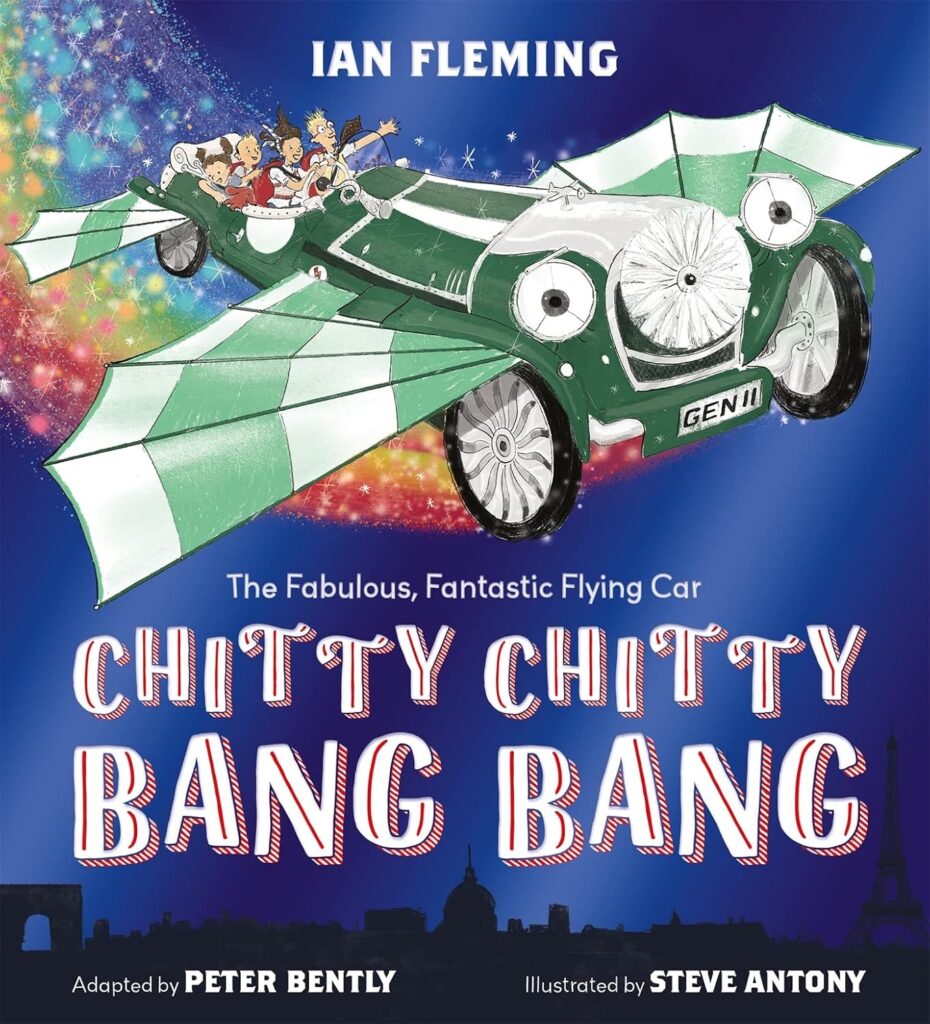
• Steve Anthony: A new take on an old favourite
• Chitty Chitty Bang Bang illustrated by Thomas Gilbert (AmazonUK Affiliate Link)
Categories: Art and Illustration, Auctions, Books, downthetubes News, Exhibitions, Other Worlds
